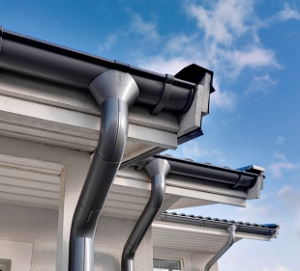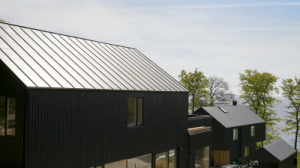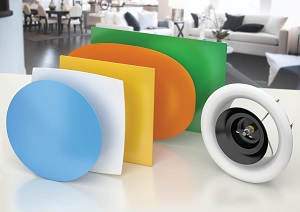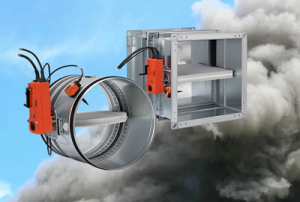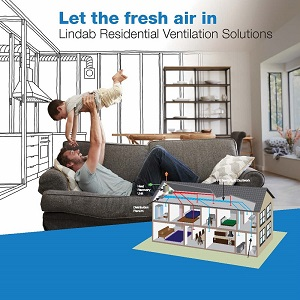LINDAB LTD
Suppliers of: Ventilation systems and steel rainwater and roofing products
LINDAB is an international group which develops, manufactures and markets energy-efficient ventilation products and high quality steel roofing and rainwater systems.
Lindab is an international group present in 20 countries worldwide and employing approx. 5,000 people. It develops, manufactures, markets and distributes products and system solutions in sheet metal and steel for simplified construction and improved indoor climate.
Lindab is at the forefront of producing technologically advanced, innovative and eco friendly products for the building industry which offer real and sustainable alternatives to less environmentally friendly products such as plastic - without compromising performance. Within the UK Lindab has two major offerings; Profile Systems including Rainline and Roofing, and Ventilation Systems including commercial, industrial and domestic solutions.
LINDAB PROFILE SYSTEMS
Lindab offers an extensive range of roofing and rainwaters solutions which are designed to simplify construction. The products are manufactured from sheel metal and are characterised by high quality, ease of installation and environmental thinking.
Lindab’s range of Building Products include:
- Steel gutters – Lindab Rainline is the industry leading steel rainwater system offering the highest quality when it comes to durability, and click-lock features which ensure ease of installation. Unlike plastic guttering, Rainline is UV stable and will not crack, fade or leak. Magestic galvanised steel is highly resistant to corrosion and virtually maintenance free. Lindab steel gutters are available in a wide range of colours with a high build polyester finish which has a 15-year guarantee.
- SRP - Lindab Coverline SRP click roofing takes inspiration from the traditional standing seam roof. Pre-formed sheets are supplied to your specific roof plan and you simply click the profiles together with no need for special tools providing an elegant, timeless roof which is easy to install for experienced professionals or practical novices alike.
- Standing Seam Roofing – Lindab Seamline is steel roofing coils for standing seam roofing. Through our collaboration with SSAB we bring GreenCoat Pro BT, DuraFrost Pro Pural, and Magestic galvanised steel options to ensure any roof can look impressive for many years.
- Fasteners - Unite fasteners are a range of professional standard standing seam roofing clips, screws, bolts/nuts, and blind rivets which have been specially designed to simplify sheet-metal construction work.
LINDAB VENTILATION SYSTEMS
Lindab has an extensive range of Ventilation systems that are energy-efficient, easy to install and meet the highest quality standards. This includes its renowned Safe Gasketed Ducting System, Indoor Climate Solutions which include air diffusers, and acoustics as well as Residential MVHR systems – all designed to create a comfortable, healthy and productive indoor environment.
Lindab’s range of Ventilation solutions include:
- Air Ducting – Lindab spiral ducting is high quality and DW144 compliant. Lindab have a comprehensive range of Safe push-fit duct fittings, Vent standard duct fittings and ISOL pre-insulated ducting in addition to many options for support systems, flashings, insulation, tools, flexible duct and flange for rectangular ducting which are available throughout the branch network.
- Demand Control Ventilation – Intelligent systems for buildings where activity level varies. Lindab products such as DCV One, Ultra BT, VAVs, VCDs and Pascal System Management provide up to 70% energy savings.
- Air Terminal Devices – An extensive range of airborne ventilation products such as valves, diffusers, grilles and weather louvres to control climate in the room by regulating air flow.
- Fire Protection Systems – Lindab fire dampers far exceed minimum requirements to reduce risk to property and life. Fire dampers and control systems provide reassuring conditions when it comes to fire safety in ventilation systems.
- Fans and Air Handling Units – Lindab offer a wide assortment of fans including domestic and light commercial, ducted inline circular and box, plate mounted, long and short cased axial, high temperature, and special application fans an AHUs. Lindab can select and supply products from industry leading manufacturers, designing a truly bespoke solution to meet your needs precisely.
- Acoustic Solutions – Lindab sound attenuators, offer acoustic solutions and accurate sound calculations for optimised ventilation systems including silencers for circular or rectangular ducting with curved, flexible, corner options and loose baffles.
- Residential Ventilation – Lindab offer residential solutions including MVHR & MEV systems available with Lindab InDomo radial ducting or TecDuct plastic ducting suitable for installation in apartments, houses, large dwellings and multiple-occupancy residences.
For upto date news visit our Blog or Social media pages on Facebook, Instagram, Twitter,, LinkedIn or our YouTube Channel
Further technical information, image galleries and product specifications are available through the Lindab website or via the BPi Download Library.
Four important factors that can affect the pressure drop of your ventilation system
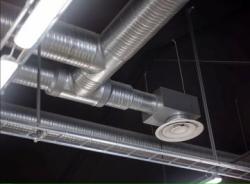 High or unbalanced pressure drop can lead to increased running costs and inefficient performance of your ventilation system. In this post we will look at four important factors that can affect the pressure drop of the ventilation system in your building.
High or unbalanced pressure drop can lead to increased running costs and inefficient performance of your ventilation system. In this post we will look at four important factors that can affect the pressure drop of the ventilation system in your building.
1. Design and dimensioning
Finding the perfect balance between the required air volume, available space and duct dimensions at the design stage is particularly important for a balanced airflow and overall system performance. Dampers or smaller duct diameters are used to balance the airflow. It is the task of the designer to find the optimum relationship between duct sizes and total pressure drop to minimise the pressure needed by the fan to overcome the resistance and move the required volume of air throughout the ventilation network. Correct sizing becomes very apparent when the air volume in an existing system needs to be increased at a later date. A 10% increase in air volume will result in a 22% increase in pressure drop, meaning that the power required to move the air will increase by as much as 34%.
2. Choice of components
The quality and design of ventilation components can either increase or decrease the pressure drop in a system. Accurate pressure drop data for each component is needed in order to size the system correctly and to use the fans or air handling units effectively. System designers are usually supported by design software and calculation tools that help to calculate the effects of all pressure losses in the ventilation system and to select the right products for efficient use of the fans and air handling units.
3. Installation and commissioning
A perfectly designed ventilation system may not be of much use if it is not properly installed and commissioned. Accurate commissioning is important to ensure that the system is installed and operates as intended. Measuring the airflow and observing any high or uneven pressures and sound levels of the system is essential to ensure a good indoor climate and an energy efficient system. Installing or adjusting dampers may be necessary to balance the system with the correct airflow and lower pressure drop.
4. Service and maintenance
Maintaining and keeping the system clean is essential for a continued energy efficient system and a good indoor environment. Dirty filters will quickly increase the pressure drop in a system and filter changes are generally recommended once or twice a year. Ventilation control should also be carried out regularly by service technicians to review the operation of the system, the indoor environment and energy efficiency. Controlling the system can help to identify any airflow imbalances, excessive pressure drops and inefficient use of the fan. Any necessary adjustments can help to reduce electrical consumption of the fan and lower the pressure drop.
Ventilation components with low pressure drop help increase the energy efficiency and the overall performance of a ventilation system. Selecting flow-optimised, high-quality products with accurate data is therefore a wise investment in terms of both health and economy. Let Lindab help you meet today’s demands for low energy buildings and a healthy and safe indoor environment.
Lindab presents top-of-the line slitting shear tool to winner of customer prize draw!
 In an exciting culmination to their recent customer survey, Lindab Ltd has announced the lucky winner of the Trumpf C200 TruTool, a top-of-the-line slitting shear that represents the company's commitment to supporting its customers with high-quality, professional solutions.
In an exciting culmination to their recent customer survey, Lindab Ltd has announced the lucky winner of the Trumpf C200 TruTool, a top-of-the-line slitting shear that represents the company's commitment to supporting its customers with high-quality, professional solutions.
Chosen randomly from the participants who provided invaluable feedback, the winner, Tony Martin from A.J.Martin Ventilation Services, was happy to share his thoughts on Lindab's customer service when he popped into the High Wycombe branch to collect his prize. "The team at High Wycombe always give a helpful and responsive service, are pleasant to deal with and have a pro-active mind-set", said Tony. A comment that underscores much of the feedback collected from customers across the business.
The survey, part of Lindab's dedicated efforts to enhance customer experience, has been instrumental in gathering essential insights directly from the users of their ventilation systems and building products. "We are thrilled to see such active participation in our survey, and we're very grateful for the support of Trumpf", said Heather Wolfenden, UK Strategic Development Manager at Lindab. "This survey is a testament to our commitment to listen to and grow with our customers, being able to offer the fantastic TruTool as a prize means that we can also give back to one lucky customer".
Trumpf work closely with Lindab to provide an impressive range of power tools which have been designed specifically with HVAC installers and metal workers in mind. Jon Young, UK Power Tools Sales Manager from Trumpf sent a message of congratulations to the winner of the Trumpf C200 slitting shear, adding, "we are proud to have been the sponsor of Lindab's recent survey".
As Lindab continues to lead the way in innovative, sustainable construction solutions, this prize draw event marks another step towards fostering a strong, community-focused relationship with its customers, ensuring that every voice is heard and valued.







